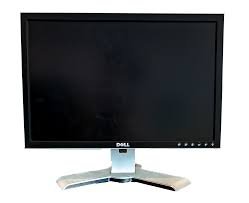Monitor Guide 2025: Everything You Need to Know Before Buying

Monitor Guide 2025: Everything You Need to Know Before Buying
Introduction
In today’s digital world, a monitor Guide is more than just a screen—it’s the window to your computer, gaming, or creative work. Whether you’re a student, professional, or gamer, the right computer monitor can make a huge difference in productivity, comfort, and overall experience. From LCD monitors to 4K monitors with stunning clarity, choosing the right display can be overwhelming with so many options on the market.
This guide will break down everything you need to know about monitors, including types, key features, and buying tips—helping you make the best decision.
What is a Monitor Guide?
A monitor guide is an electronic output device that displays visuals generated by a computer or other devices. It serves as the primary interface between the user and their machine, making it essential for daily computing, gaming, design, and professional tasks.
There are different types of monitors, such as:
- LCD Monitor – Lightweight, energy-efficient, and widely used.
- LED Monitor – Advanced backlighting for brighter and clearer visuals.
- 4K Monitor – Ultra-high resolution with four times more pixels than Full HD.
- Curved Monitor – Provides immersive viewing for gaming and multitasking.
Types of Monitors
1. LCD Monitor
- Uses liquid crystal display technology.
- Affordable and widely available.
- Offers decent color accuracy and energy efficiency.
2. LED Monitor
- A type of LCD monitor but with LED backlighting.
- Produces brighter and more vibrant colors.
- Slimmer and more energy-efficient than traditional LCDs.
3. 4K Monitor
- Resolution of 3840 x 2160 pixels.
- Perfect for video editing, graphic design, and gaming.
- Provides sharper images, detailed text, and lifelike visuals.
4. Gaming Monitor
- High refresh rates (120Hz, 144Hz, 240Hz).
- Low response times for smooth gameplay.
- Features like G-Sync or FreeSync reduce screen tearing.
5. Curved Monitor
- Enhances depth and reduces eye strain.
- Ideal for multitasking and immersive experiences.
Key Features to Consider Before Buying a Monitor
When selecting a monitor, here are the most important features to keep in mind:
- Resolution
- Full HD (1920 x 1080) – Standard for office and casual use.
- Quad HD (2560 x 1440) – Sharper visuals for professionals.
- 4K UHD (3840 x 2160) – Best for gamers, editors, and designers.
- Refresh Rate
- 60Hz – Basic for normal usage.
- 120Hz–144Hz – Great for gaming.
- 240Hz+ – Competitive-level performance.
- Response Time
- Lower response time (1ms–5ms) is better for gaming and fast-moving visuals.
- Panel Types
- IPS (In-Plane Switching): Superior color and viewing angles.
- TN (Twisted Nematic): Affordable and fast response times.
- VA (Vertical Alignment): Balanced contrast and performance.
- Connectivity
- HDMI, DisplayPort, USB-C, and Thunderbolt support modern devices.
- Ergonomics
- Height adjustment, tilt, and swivel help with long working hours.
Benefits of Using the Right Monitor
- Better Productivity: Multitask with larger screens.
- Eye Comfort: Reduced strain with blue light filters.
- Gaming Experience: Smooth visuals and fast response.
- Professional Accuracy: Graphic designers and video editors need color-accurate displays.
Top Monitor Recommendations for 2025
- Best for Office Work: Dell Ultrasharp LCD Monitor.
- Best for Gaming: ASUS ROG Swift 144Hz LED Monitor.
- Best 4K Monitor: LG UltraFine 4K.
- Best Budget Option: Acer 24-inch LED Monitor.
Internal & External Link Suggestions
- Internal Links:
- External Sources (Authoritative):
FAQs About Monitors
1. What is the difference between an LCD monitor and an LED monitor?
An LED monitor is actually a type of LCD monitor but uses LED backlighting instead of fluorescent lights, offering better brightness and efficiency.
2. Is a 4K monitor worth it for everyday use?
Yes, if you watch movies, play games, or do creative work. For simple office work, a Full HD or QHD monitor is usually enough.
3. Which monitor is best for gaming?
A gaming monitor with at least 144Hz refresh rate, low response time, and G-Sync/FreeSync support is ideal.
4. How do I choose the right monitor size?
For general use, 24–27 inches is ideal. Gamers and professionals may prefer 32-inch or ultrawide monitors for more workspace.
5. Are curved monitors better?
Curved monitors provide a more immersive viewing experience and reduce eye strain, especially for large displays.
Conclusion
Choosing the right monitor depends on your needs—whether it’s for gaming, office work, or professional design. From LCD monitors to 4K monitors, today’s market offers plenty of options to match your budget and requirements.
👉 Ready to upgrade your setup? Explore the latest monitors today and experience sharper visuals, smoother performance, and greater comfort.
Would you like me to expand this into a 1500+ word version with detailed brand comparisons (Dell, LG, Samsung, ASUS, etc.) and a buying checklist to make it more comprehensive for SEO?


